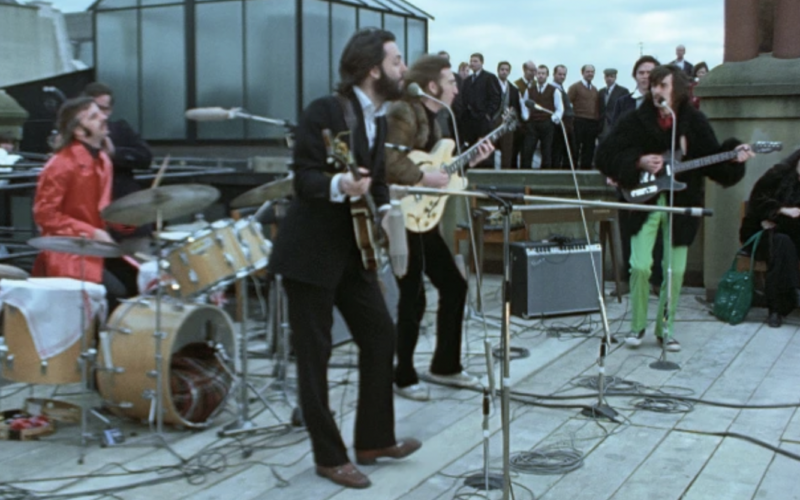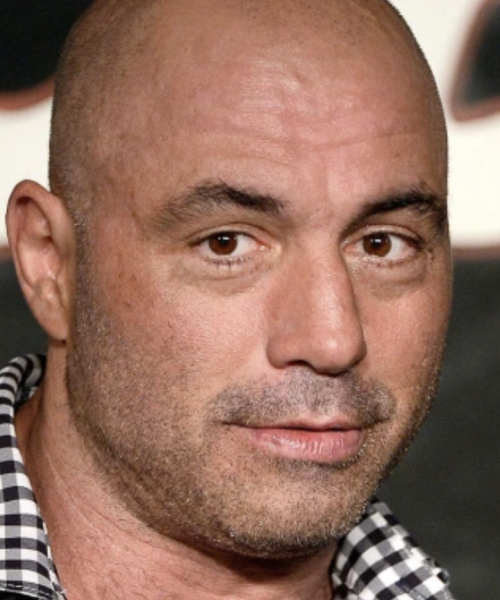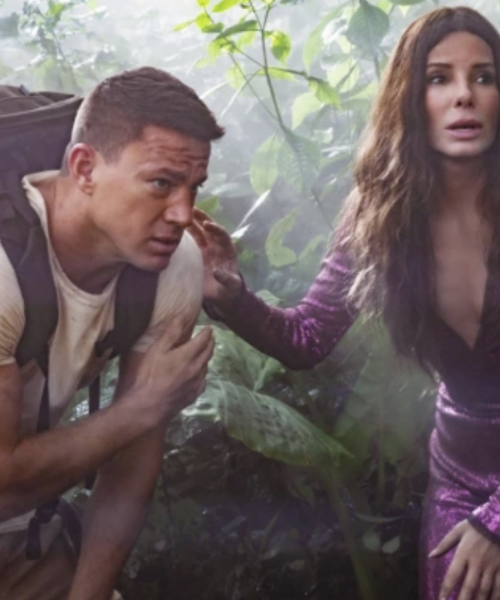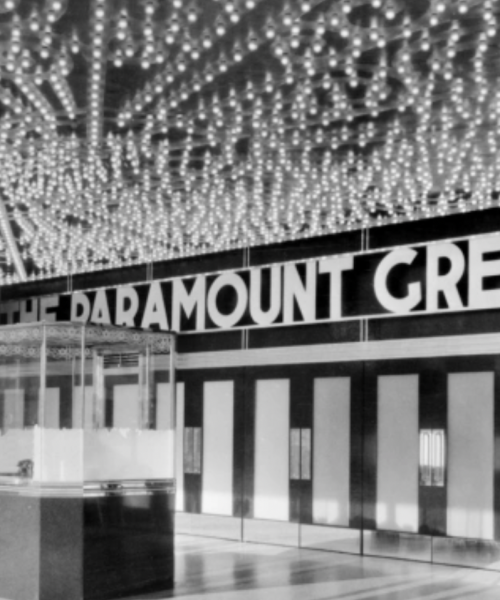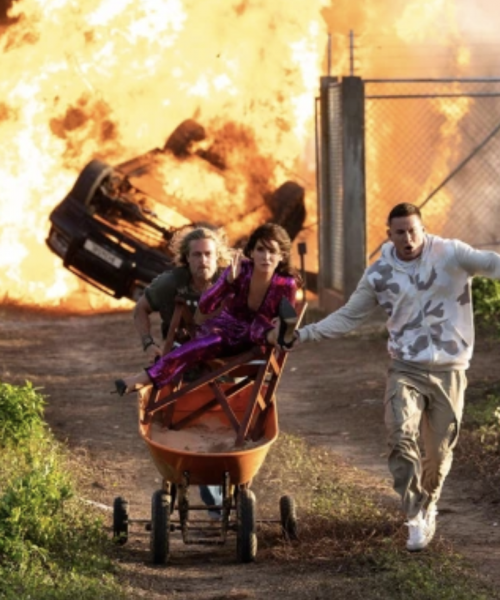BY SHERI LINDEN | HollywoodReporter.Com
Troy Warren for CNT #Entertainment
Peter Jackson’s three-part documentary chronicles an intensely productive month for the band, culminating in the legendary Jan. 30, 1969, public performance that would be its last.
They might have been the most famous musicians in the world, but there was a bit of understandable nerves when The Beatles convened just after New Year’s in 1969. For the past two years they’d sworn off touring, focusing instead on studio experimentation with such aurally adventurous releases as Sgt. Pepper’s and Magical Mystery Tour. Now they wanted to write songs together again, the old-fashioned way, and perform them in front of people.
Conceived as a live album and TV special that would capture their first performance before an audience since 1966, the group’s “Get Back” project would morph several times over their three weeks of writing, rehearsing, goofing around and navigating, with the utmost British restraint, interpersonal tensions. Until now, the only documentation of this period, beyond the tracks that wound up on the albums Abbey Road and Let It Be, was an 80-minute documentary that has long been out of official circulation. The film Let It Bewas released a few weeks after the band’s long-brewing 1970 breakup, and it would become indelibly connected with the acrimonious end of an era.

One of the beauties of The Beatles: Get Back — and there are many — is that it doesn’t shape itself as a lead-up to the Fab Four’s final rupture. There isn’t a single line of onscreen text that even mentions it. The simmering resentments are evident, but so too are the joys. A few well-chosen historical passages aside, Peter Jackson has made an immersive, in-the-moment chronicle of a generation-defining band in the act of creating, offering an up-close look at the quartet’s alchemy.
Granted access to a treasure trove of video and audio recordings, Jackson has directed what he calls a companion piece to the earlier doc. But it’s also a corrective; at nearly eight hours, the docuseries can’t help but provide a fuller picture of those three January weeks when John Lennon, Paul McCartney, George Harrison and Ringo Starr came together to craft new songs. Like The Beatles, Jackson shifted gears from his original plan: Get Back initially was intended as a feature-length theatrical release, but, with 60 hours of video and 150 hours of audio at his disposal, he opted for a less constrained format. He and editor Jabez Olssen have done a monumental job of curating and shaping the raw material.
For the casual fan, and even for some ardent admirers, the series’ trio of lengthy installments — none less than two hours, and one clocking in at nearly three — might perhaps be too much of a good thing, in a way that only a completist could love. But the chance to be a fly on the wall as The Beatles do their magic will be an irresistible draw for many, and Thanksgiving weekend, when the show premieres on Disney+, is the perfect opportunity for some unhurried quality time with the lads from Liverpool.
Whether you’re enrapt or merely patient, the series has a cumulative power, building in a way that parallels the triumphant and moving results of the band’s deceptively fitful rehearsals. The climactic sequence is the daytime concert, unannounced and sans permits, on the roof of Apple Corps headquarters. It wasn’t intended as a farewell, but it would be The Beatles’ last public performance, and Get Back presents the 42-minute event for the first time in its entirety.
Having restored much older footage for his first nonfiction film, They Shall Not Grow Old, Jackson has become something of a master of the process in just a few short years. In Get Back, the restoration and digitization of the 16mm footage and the remixing of the cleaned-up monaural sound are so crisp and fresh that the already intimate material — Anthony Richmond was the DP, and Michael Lindsay-Hogg the director — has a dazzling immediacy. It’s easy to forget that the events unfolding onscreen happened half a century ago, and that several of the key figures in the film are long gone. (Yoko Ono and Olivia Harrison, the widows of two of the departed, are among the show’s producers.)
With great energy and concision, an 11-minute opening section presents the capsule career backstory, from the North of England to Hamburg to Beatlemania. For the rehearsal sequences, Jackson opts for an unrushed approach, taking it all in: the impasses, the noodling around, the wry eyeballing of fan magazines and tabloid stories, George’s enthralled description of the sci-fi show he watched the previous night, Paul’s Elvis and Canned Heat impersonations, and the many side-excursion jams (Dylan, the Third Mantheme, and lots of R&B, country and rock ’n’ roll classics).
With an endless supply of tea, toast, cigarettes and German white wine, the foursome embark on their daunting project — write and learn an album’s worth of songs in less than a month. They begin on a barren soundstage at Twickenham Studios, eventually moving to the homier setting of the group’s new basement studio at Apple Corps. McCartney is the dominant force, and fully conscious of it. Ono is as ever-present as the band’s esteemed and gentlemanly producer, George Martin, and recording engineer Glyn Johns; countering her villainization by the world at large, the show reveals not an instant of discord on that front.
McCartney’s soon-to-be wife, photographer Linda Eastman, is often on hand, and a visit to the studio by her daughter Heather is a delight — not only for her childish enthusiasm, but for what her presence reveals about the band. A bemused Peter Sellers (with whom Ringo is about to shoot The Magic Christian) pops in for a bit and, not quite in sync with Lennon’s humor, quickly excuses himself. The arrival of keyboardist Billy Preston, who planned just to say hello and ends up becoming the fifth Beatle for the duration of the project, is an exhilarating shot of adrenaline and sweetness.
We hear the seeds of songs that will end up on post-Beatles solo albums with entirely different lyrics. Of the 35 numbers in the film, a handful of new Beatles tunes are heard over and over, their melodies, harmonies and instrumental arrangements continually being perfected. The repetition is only occasionally wearing, and it can be unexpectedly thrilling, especially in the case of the doc’s title song and centerpiece. It’s an electrifying moment when Paul first plucks out the “Get Back” melody on his bass, singing nonsense syllables as something takes form and makes his bandmates sit up and take notice.
Through it all, there’s an undeniable undercurrent of discontent. “The Beatles have been in the doldrums for at least a year,” the aggrieved George says, and the even-keeled Ringo, usually up on his riser and taking in the verbal volleys like an impassive Switzerland, admits at one point that the group has been “a bit grumpy.” Lennon’s eagerness to do business with super-manager Allen Klein foreshadows the litigation and bad blood to come, and Harrison, ready to step out of the shadows of the Lennon-McCartney brand, quits the band for a few suspenseful days. But more than the strain, what makes an impression is the band’s playfulness and how they make one another laugh.
There’s unintended humor too. Before the TV special is scrapped in favor of a feature-length film, Get Back enters the land of Rutles-esque parody as Lindsay-Hogg, the project’s young, brash director, pushes his ideas for a dramatic concert location. His dream of a show in an ancient amphitheater on the Libyan coast meets resistance, and he improvises a few closer-to-home options: “What about a hospital?” he says. “But I don’t mean for the really sick kids. I mean for kids with broken legs.” There’s something endearing about his determination to find a setting that’s worthy of the group — precisely the trap of stature and expectation that The Beatles themselves, still in their 20s and ready to move on, are all squirming against.
And so, ultimately, they bring it down to earth — or at least five stories up. They end their hiatus from the concert stage in fanfare-free yet spectacular fashion on a Thursday in Mayfair, London, unleashing a few of their new songs on an unsuspecting lunch-hour crowd. (Sign of the times: In all the planning, there’s not a word about security, and no sign of any during the event.) The show is the perfect paradox, putting The Beatles back before an audience and yet not really; people on the street, a few of them cranky but most of them elated, can’t see the band.
With ultra-dynamic split screen, Jackson makes brilliant use of the original film crew’s 10-camera setup — five of them on the roof with the band, one on a building across the street, three at street level. The 10th camera, in Apple Corps’ reception area, records what could have been an outtake from A Hard Day’s Night: A few earnest bobbies try to shut down the band’s disturbance of the weekday peace. Regarding the amplified music, one of them asks an employee, “Surely this isn’t necessary, is it?”
Tracing the stops, starts, detours and musical-genius breakthroughs over the 22 days it took to create something “spontaneous,” The Beatles: Get Back offers ample evidence that necessary is in the eye of the beholder.
In Other NEWS


























